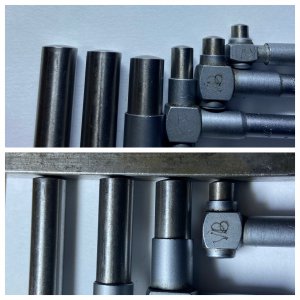- Joined
- Sep 1, 2020
- Messages
- 549
This week there were two threads going about taking inside measurements. One trying to find the best tool for it and another talking about using Inside Spring Calipers. I thought I would make a video to help those two members and maybe others. As they say a picture is worth a thousand words, I hope this video helps.
Having trouble getting the same accuracy measuring Inside Diameter (ID) as you are measuring Outside Diameter (OD), then this video is for you. I can't pass "feel" through the video but these techniques should help you develop your own feel for measuring.
Accurate measurement is the key to most machining tasks whether boring on a metal lathe or on your milling machine or just measuring parts for fit. You want to make sure your measurements are accurate.
The video has the following sections for the different tools - Where listed multiple times, they are measuring a different size bore, or setting the tool vs. measuring the tool with a mic: If you go to the description of the video in YouTube you will find actual links to each time listed.
Overview of all the tools - 1:35
Mitutoyo Digital Vernier Calipers - 3:45
Inside Spring Calipers - 6:15, 11:45, and 17:30
Telescopic Gauge - 9:05, 13:05 and 20:40
Mitutoyo 1-12" Inside Micrometer - 9:50, 13:45, and 22:00
I hope this helps you master your "feel" in accurate measurement.
Having trouble getting the same accuracy measuring Inside Diameter (ID) as you are measuring Outside Diameter (OD), then this video is for you. I can't pass "feel" through the video but these techniques should help you develop your own feel for measuring.
Accurate measurement is the key to most machining tasks whether boring on a metal lathe or on your milling machine or just measuring parts for fit. You want to make sure your measurements are accurate.
The video has the following sections for the different tools - Where listed multiple times, they are measuring a different size bore, or setting the tool vs. measuring the tool with a mic: If you go to the description of the video in YouTube you will find actual links to each time listed.
Overview of all the tools - 1:35
Mitutoyo Digital Vernier Calipers - 3:45
Inside Spring Calipers - 6:15, 11:45, and 17:30
Telescopic Gauge - 9:05, 13:05 and 20:40
Mitutoyo 1-12" Inside Micrometer - 9:50, 13:45, and 22:00
I hope this helps you master your "feel" in accurate measurement.



